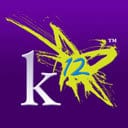Q&A: The Online Teaching Landscape

Online and blended teaching is a new art and skill for teachers today. It requires a unique set of skills to connect with students remotely and stay current with new technologies. Teresa Scavulli, K12 Inc.’s Vice President of Academic Services, joins us today to share her insights on online and blended teaching through training, professional development and informal learning.
Q: What do you look for when hiring an online teacher?
At K12 we are proud to work with the largest network of K-12 online school teachers in the U.S. We’ve been able to build this amazing network of professionals by looking for people who use technology with ease, who are flexible, resourceful and most certainly, self-starters. We also spend a great deal of time searching for candidates who have great interpersonal skills because this online model is one that relies heavily on being able to proactively “connect” with learners and their families (at a distance) in non-traditional ways.
Q: What do you find are the biggest challenges when transitioning from a traditional classroom to an online classroom?
Every year more and more teachers transition from classroom to online teaching at K12 to look for new challenges, and new opportunities for professional growth. The biggest challenge tends to be moving away from being the “sole” or primary deliverer of instruction to understand the blend, and ultimate role of asynchronous instruction. There are other challenges such as learning how to build teacher presence without physical proximity to students as well learning how to use the tools at your disposal to diagnose from a distance what’s happening around learning when the visual and concrete feedback prompts from the traditional classroom are no longer present.
At K12 we spend a considerable amount of resources to provide world-class training and professional development to our teachers. Challenges aside, we hear often that shifting to online school has rejuvenated their love for teaching.
Do you feel that college programs for upcoming educators effectively prepare students for teaching in online or blended environments?
In my opinion, no. Until very recently, most undergraduate teacher institutions did not have programs or even certifications for teaching online or in blended environments. There are now a few that have begun to take on this endeavor, but this type of preparation is still largely done at the graduate level.
Q: Do you know of a “best practices” example of a college or university preparing students for blended learning?
I can’t name one with certainty because I have not done a side-by-side comparison since this type of preparation is quite new. I have, however, worked with Lisa Dawley from Boise State on some of her research and field experiences surrounding online teaching and believe that her experience and her research best position her to build a great program.
Q: What would you recommend students and educators to look for when choosing a school or professional development program for online teaching?
Teachers are the most important part of any successful school or education program. At K12, we respect and appreciate the hard work and art of teaching and seek to equip our teachers with world class training and professional development opportunities. We believe the best professional development and academic institutions in this arena would have a sound blend of research and first hand experience in the field of virtual learning, just as ours does. A program that does not include the input and experiences of the “pioneers” of virtual learning will be missing a key element.
Q: How can we better prepare upcoming teachers to integrate technology into the curriculum for teaching online?
I think that tends to be largely a function of the curriculum and what is included. In our curriculum, for example, threaded discussions are often included along with suggestions for adapting asynchronous instruction for synchronous delivery. Teachers who are interested but not involved in teaching online can spend time familiarizing themselves with the use of simulations, instant messenger programs, threaded discussion tools, blogs, and other online classroom programs such as Blackboard Connect, Jigsaw Meeting, etc.
Q: Technology today is a dynamic, fast-changing component to teaching. How do we create policies to adapt to the moving target of technology in the classroom?
You’re right! Technology changes so quickly that it can be like a moving target. I think the best thing we can do is create policies in conjunction with the best and brightest, most technologically savvy teachers from the field so that whatever is developed is not so short sighted that it unknowingly “handcuffs” teachers into not taking action or being resourceful when seeking technological solutions to enhance learning.
Q: How would you recommend teachers today stay current with the dramatic shifts in technology and teaching in the future?
Teachers today need to be avid users of technology themselves to best understand the tools as well as be aware of upcoming shifts. Additionally, there are numerous professional publications and state education departments of technology that can help teachers stay abreast of trends, legislation and upcoming shifts.





0 Comments
Leave a Comment
Your email address will not be published. All fields are required.